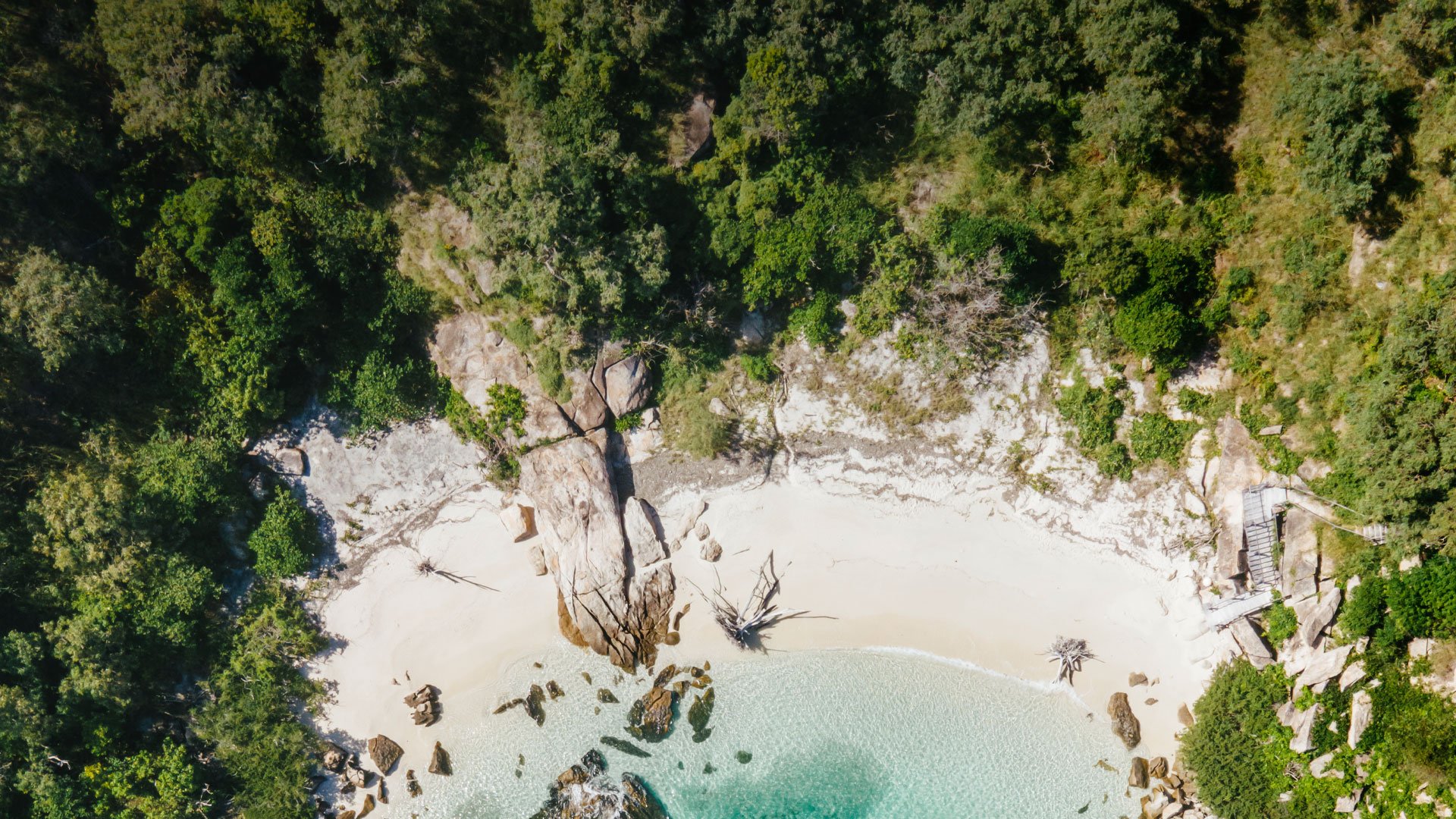
Nature / Hiking
Lizard Island was a part of the Australian mainland only 9,000 years ago before the last sea level rises, however the island’s pink-grey granite rock foundation is much older than this. Having formed deep below the earth’s surface about 300 millions years ago, the landscape is a beautiful expanse of granite hills encapsulated by snow white sandy beaches.
The entirety of Lizard Island is a declared National Park and covers over 1,000 hectares, the highest peak being Cooks Look at 359 metres above sea level. The terrain is shrouded in native grasslands, Eucalypt and Acacia woodlands, heaths, paperbark swamps and mangroves, transforming each month as the flora and fauna are affected by the migration of animals and the blooming of plants.
Guests of The House are encouraged to explore the island’s rocky tracks either unguided or with the Island’s resident naturalist to experience the native flora, fauna and sacred indigenous sites. There is also the opportunity to follow in the footsteps of Captain James Cook as he hiked the island’s summit and take in the impressive views above Watson’s Bay and the island’s outer reef.
Lizard Island Nature Calendar
View the Lizard Island nature calendar below so that you will be sure not to miss out on your most treasured natural wonder, and experience truly unique ecotourism.
-
The Amphibious month
Green Tree Frogs dominate the nocturnal sound show as they come out to breed
The Black Flying Fox camps are at their largest, providing spectacular flight scenes at dusk
Monitor Lizard activity is high, they can be seen digging nesting tunnels around the island
-
Black-Naped Terns begin nesting
Terns swarming around Osprey Island prey on the summer fish stocks
The Melaleuca Forests flood and mangrove swamps are rich with juvenile fish life
Constellation of Orion dominates the early night sky
-
Crested Terns begin nesting
Pheasant Coucal birds can be seen changing to their darker plumage
Sacred Kingfishers are often sighted around the island
-
Migratory birds, such as the Lesser Golden Plover, begin to show their breeding plumage before the migration to the northern latitudes
Bar Shouldered Doves begin nesting
Southern Cross constellation can be seen rising early in the night sky
-
Green Sea Turtles can be spotted feeding along the beaches at low tide
Clear skies and early twilights bring red sunsets over the Pacific
Kapok Bush begins to flower
Swallowtail Butterflies sighted around the resort
-
Humpback Whales begin their northern migration. Curious Minke Whales often approach tour vessel for a closer look
Playful Spinner Dolphins may surf the bow wave on the outer reef trips
Clear views from the top of Cooks Lookout
Centaurus shines over the meridian at night
-
Humpback Whale sightings during their migration to warmer waters for calving
Goannas often sighted along tracks warming their bodies in the midday sun
Osprey often sighted around their large, high nests
-
White-Breasted Wood swallows begin breeding
Umbrella trees show off their brilliant red flowers
Constellation of Scorpio dominates the spring night sky, chasing Orion over the western horizon
-
Marlin season begins with Giant Black Marlin cruising the outer reef during their breeding season
Minke and Humpback Whale sightings from around the island
Black Flying Foxes feed on the mango fruits around the resort at night
As the water temperatures warm towards 27°C, wildlife activity increases
The prominent bright yellow flowers of the Kapok Bush are in full bloom
The 'Teapot' in Sagittarius shines above at night
-
Lesser Golden Plovers arrive on the island from Siberia and Alaskan territories
Torres Strait Imperial Pigeons migrate down from Papua New Guinea to form breeding colonies on the island
Beach Stone Curlew patrol the beaches, acting as decoys for their nests
Black Marlin begin their spawning season on the outer reef
-
Coral reef annual spawning turns the blue waters orange toward the end of the month
Kapok Trees begin fruiting
Green, Loggerhead and Hawksbill Turtles graze on sea grasses along the beaches
Pelagic fish species increase activity around spawning season
Monitor Lizards become active while constructing nesting chambers
-
Occasional sightings of Manta Rays around the island
Water temperature is a warm 29°C


